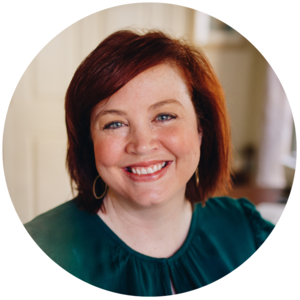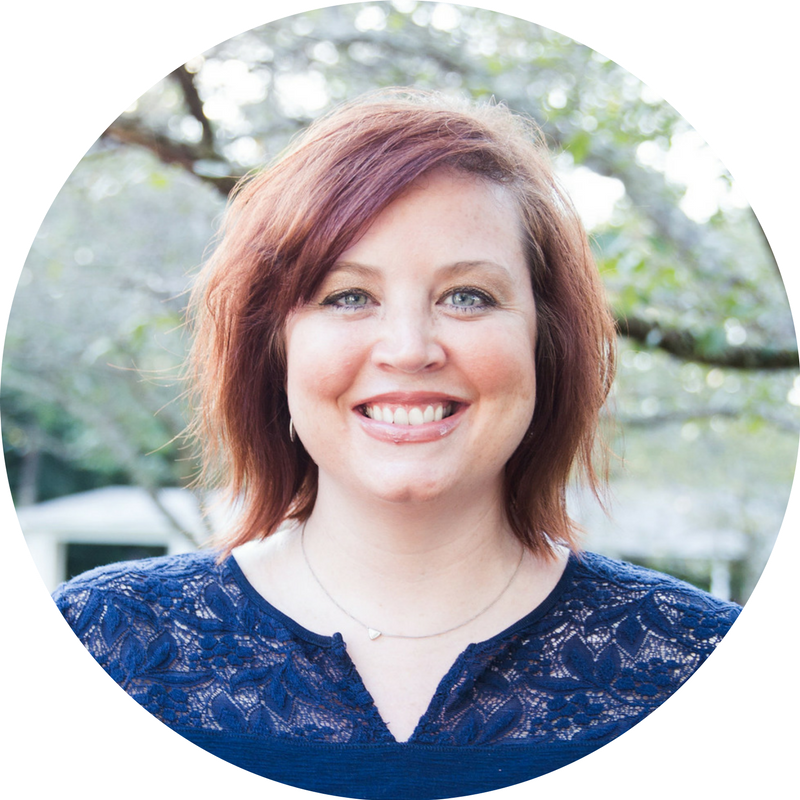Networking: No matter your organization or expertise, it’s one of the skills that everyone needs to grow their nonprofit or social enterprise. But, depending on your personality or interpretation of the word, you may be reluctant to pursue it.
Today’s post may change that, though. Using her proven “networking matrix,” my friend Sarah Voltmann Costello will demonstrate how to make your networking not only more effective, but remove any stigma you have about it being sleazy.
Authentic networking is simply relationship-building, and I know you’re already good at that. So, let’s just put a little intentionality behind it. Once you learn how to find the right people and build valuable connections, you’ll be able to increase your impact through new donors, customers, partners, and sponsors.
No one builds a successful organization in a silo, and this post will show you how to rally a community for your cause.
Networking can be an intimidating thing to do. Awkwardness and fear of putting yourself out there as a professional is completely normal. You are in a different frame of communication than you’re used to.
You aren’t talking about things you saw on social media, music, or what you did this weekend. This is, in fact, an entirely different language from how you talk about your personal life. Knowing who you want to talk to, how to make an ask, and how to tell your “why” is an art.
The good news is, you’re not alone! And there are ways to create an action plan that takes the guesswork out of it.
As a military spouse, nonprofit professional, and social entrepreneur, this method of networking has become my lifeline for moving into new spaces (figuratively and literally). Perhaps you have experienced a career change, a sudden move, or you’re trying to establish a better network to leverage a better job. Whatever your reason for wanting to network, it can seem an impossible task until you break it down into steps.
I had to learn this method the hard way, by starting over three separate times in three completely different regions of the U.S. I moved to Seattle in 2019 knowing only my realtor, but I now have a strategic network of over 250 individuals related to or able to empower my work here. And it took me less than a year to do most of that—you can do this, too!
So here we go! I’m going to share with you my method for adjusting quickly to a new scenario, how to connect with the people in your sector, how to make a plan for connection, and how to execute that action plan.
Let’s build your network matrix.
Six Degrees of Separation
You have probably heard of the song, the film, and maybe even the Kevin Bacon game. “Six Degrees of Separation” is not a new concept; in fact, it dates back to 1929. That’s right, prior to computers, the internet, social media, and smartphones, experts claimed we were within six degrees of anyone we would want to meet. Nowadays, that number is even smaller!
Here’s how it works: Our network exponentially grows as we leverage the network of others. When we invite people into our network, we have the opportunity to leverage theirs. And even though we may not realize it, we are even within six degrees of someone like Richard Branson. All that’s required is some intentionality.
How are you supposed to utilize this awesome web of connections if you don’t even know it exists? You need to create an action plan of who you’re trying to meet and how you plan to do it.
Without a plan, there might as well be 1,000 degrees between you and a “Richard Branson” figure. Going to a Rotary Club meeting, attending chamber of commerce meetings, or participating in any other networking group is great! However, allowing people into your network “as they come'' will not get you where you want to go quickly. It may happen eventually, but we have the opportunity to be more strategic.
The Six Basics of Networking
Start with the six basics: who, what, where, when, why, and how.
WHO are you trying to connect with? Is it executives with decision-making power, HR representatives to get an interview, donors for your fundraising, investors for your product or service, or case workers in the field? Who are they and what role do they play?
The next question to answer is, WHAT industries or type of work are you trying to connect with? For instance, nonprofits, government, public, or private are all areas to consider. Can you go further and break them down by industry codes or cause areas? The more specific you can get, the better you’ll be able to communicate your needs to others in your network.
These first two are key.
WHEN and WHERE are very simple. You’ll need to answer for yourself, “What’s my time frame? WHEN am I trying to accomplish this?”
This long-term or short-term goal will dictate how many meetings you need to take per week. For instance, if you are moving to a new city and need to apply for jobs, you might schedule anywhere from three to seven networking meetings per week to get started.
Keep your WHERE simple. It’s the radius of where you need to network: city, state, or region. The tighter you can keep this radius, the more connections you will find immediately.
Now, plan HOW you will connect with these individuals. Will you attend networking meetings, reach out to your existing connections, or rely on warm leads or introductions to meet new people? What groups are they associated with? What events are they speaking at?
And finally, know your WHY—the story you tell or your elevator pitch—along with your “ask” as you start connecting with these individuals you’ve worked so hard to find.
Let’s dig into each of these steps a little deeper.
WHO AND WHAT
Let’s pause for a moment and discuss tools you already have at your disposal to define your WHO and your WHAT.
With the internet we are more connected than ever to all of mankind’s knowledge. Social media, government websites, Forbes, LinkedIn, GuideStar, and Google are powerful tools for helping you identify the organizations and individuals in the fields you need to connect with. And there’s no need to pay for expensive PROSPECT LISTS!
For instance, you might search for social enterprises in your area, or perhaps you’re looking for case management organizations. Maybe you need a list of millionaire CEOs who support equal hiring. Don’t reinvent the wheel: Check to see if someone has done this work for you already. And if you are struggling to find results, break your target audience into more manageable bites.
WHEN AND WHERE
Your strategy should be S.M.A.R.T: specific, measurable, achievable, realistic, and timely. When answering these questions, you should set Key Performance Indicators (KPIs) for yourself that let you know when you’ve achieved your goal.
Focus on what you’re trying to achieve. Is it quick employment, integration into a sector, or credibility in your line of work? Where are you trying to meet your goals? Which states or regions will you focus in? Can you narrow it down to specific counties in order to become well-known among common professional circles? When are you trying to achieve this? Is it in one year or immediately?
Set realistic goals for yourself such as:
Attending one networking event per month
Scheduling one to two networking meetings per week
Focusing on one area where you will do the majority of your work to start (i.e. Seattle)
HOW
How will you connect? Are you starting from a foundation or are you starting from scratch? This is often the part that trips people up the most.
Start by building a spreadsheet of all the organizations you want to connect with, their employees, and the existing connections you have.
On LinkedIn you have the ability to search any company, click on their employees list, and filter it based on 1st or 2nd degree connections. These are individuals in your network who are already connected to the people that you are searching for. You may be surprised by who pops up. Often it’s individuals that you may have spoken to before about introducing you to others, but without a targeted WHO and WHAT they didn’t know HOW to do that for you. Now you have the ability to give them a list of names and ask for targeted introductions.
This changes the conversation entirely with the individuals you are trying to meet. Remember, when reviewing applicants, the recruiter’s job is to say “no” and narrow down the list. When networking, however, their job is to be social and “connect.” Build out your spreadsheet of existing connections and potential warm introductions and you will get to a “yes” quicker!
If you are starting from scratch, here are a few tips to get you started:
Join groups on LinkedIn or social media that are relevant to your WHO/WHAT/WHY or background.
Find in-person groups and networking events to attend regularly such as Rotary Club, BNI, Chamber of Commerce, etc.
Collect business cards from everyone you talk to because you need a foundation to start with. DO NOT give them yours and expect them to email or call. You need to take the initiative.
Send follow-up emails within 48 hours and ask for a quick phone call or one-on-one.
Send thank you emails and LinkedIn connection requests within 24 hours of one-on-ones.
Have a specific “ask” (or request) that includes referrals to their contacts.
Update your networking matrix with your new contacts regularly.
WHY
When you finally reach the point of receiving warm introductions to the individuals you’ve looked for and researched, they’ll want to know WHY you want to connect. What will that story be?
Focus on being concise, telling a little bit about yourself, and detailing who you are trying to connect with.
For example, you can write emails like this one to your connections so they can forward it to the contacts you’ve asked to meet as an introduction:
Mr. Smith,
Thank you for taking the time to meet with me this week. I wanted to send a quick follow up with you about our conversation.
I mentioned that I was new to (city) and am building my network alongside my job search. I’m a X professional, with X years of experience in X and X. I’m passionate about X and want to meet other individuals who share that mentality. I’ve attached my CV for a bit more context on my background.
Can you introduce me to some professionals I should know who are involved in X industry/work? Thank you for your time!
Warm regards,
Your name
Your Network is Only as Good as Your Follow Up!
One final point: Networking works best when you focus on being of “service” to those you want to do business with. It’s not all about you.
What are they looking for?
What do they need?
Can you provide it or something similar?
Look for opportunities to be useful to them.
This concept is called “servant leadership” and if you are looking to attract people to you and your cause, this is your strongest tool! When you put yourself out there to serve others, they will in turn look for ways to serve you, because they are grateful for you.
Build the mentality that you are searching for professional “relationships” not gum ball machines. Here are some tips:
Take notes while you’re meeting.
Follow up on something specific they said.
If they helped you achieve something, thank them and return the favor.
Respond within 24 hours.
Ask for follow-up meetings and schedule immediately when you can.
Find places to “bump” into them again.
Still Having Some Anxiety?
If you still feel like this process might not be for you, let me share some examples of success that I’ve had over the years using this approach:
Working for an international organization, my team leveraged this method to find STEM and business internships for students abroad to work in the U.S.
Moving from Indiana to Florida, I had to start over in a new line of work. I used this method to become a program director in the nonprofit sector.
The Air Force moved us from Florida to New Mexico, and I started a real estate social enterprise to employ myself. In six months, I had a team of 10 partners (real estate agents, investors, and fellow entrepreneurs) in three states to help me make offers on homes.
When we moved from New Mexico to Washington, we only knew our realtor. I used this method to meet nonprofit professionals with hiring power and gained a meeting with the CEO of a $140 million organization.
Through my networking matrix, I was referred and asked to serve as a volunteer consultant for immigrant/refugee serving organizations. I gained employment with one of the nonprofits shortly after.
Now I use this method to meet major donors and to establish a social enterprise for a nonprofit in the Southeast.
The most important theme in all these successes is not determination or ingenuity, but service to others. Keep that mentality as you’re networking and you will find doors opening for you.
GOOD LUCK OUT THERE!
A nonprofit professional, Air Force wife, and social entrepreneur, Sarah Voltmann Costello has spent the last 11 years building a career centered on the ideals of a global mindset and nonprofit efficiency practices while being a trailing spouse.
Leveraging her Network Matrix strategy, she has learned to be a highly adaptive and tenacious “servant leader,” focused on driving greater impact in our global community by supporting nonprofit leaders in their missions wherever she is placed. Over the years of working with more than 60 nonprofits across multiple impact areas, she has learned to leverage the existing assets of an organization to build strategies for real growth that can be multiplied toward large-scale community development.
Today, Sarah lives in the beautiful PNW in Seattle, WA, with her husband, and leverages these strategies to break down barriers for nonprofit leaders around the U.S. by building sustainable fundraising or social enterprise ventures.
PIN THIS POST FOR LATER:
I’m Kristi Porter, and I help cause-focused organizations understand and execute effective marketing campaigns so they can move from stressed to strategic. Your resources may be limited, but your potential isn’t. Whether you’re a nonprofit, social enterprise, or small business who wants to give back, I’ll show you how to have a bigger impact.






























